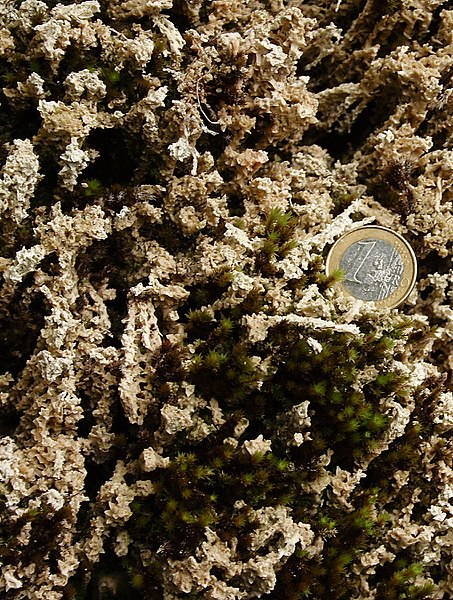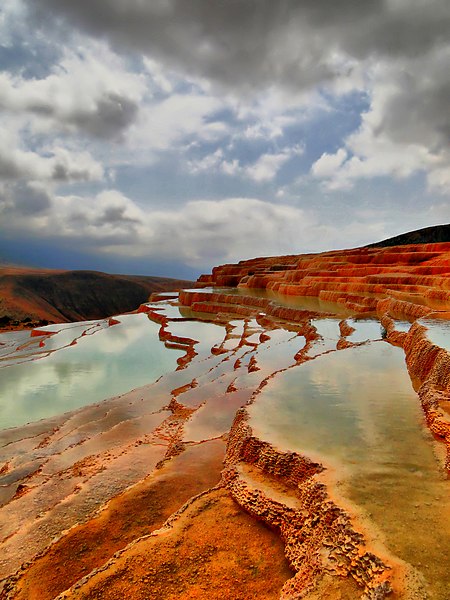Mammoth Hot Springs is a large complex of hot springs on a hill of travertine in Yellowstone National Park adjacent to Fort Yellowstone and the Mammoth Hot Springs Historic District. It was created over thousands of years as hot water from the spring cooled and deposited calcium carbonate. Because of the huge amount of geothermal vents, travertine flourishes. Although these springs lie outside the caldera boundary, their energy has been attributed to the same magmatic system that fuels other Yellowstone geothermal areas.
Dead Trees at Mammoth Hot Springs
Crystallized calcium carbonate terraces
Elk on travertine terraces
Mineral deposition
Travertine is a form of terrestrial limestone deposited around mineral springs, especially hot springs. It often has a fibrous or concentric appearance and exists in white, tan, cream-colored, and rusty varieties. It is formed by a process of rapid precipitation of calcium carbonate, often at the mouth of a hot spring or in a limestone cave. In the latter, it can form stalactites, stalagmites, and other speleothems. It is frequently used in Italy and elsewhere as a building material. Similar deposits formed from ambient-temperature water are known as tufa.
Travertine terraces at Mammoth Hot Springs, Yellowstone National Park, in 2016
Calcium-carbonate-encrusted, growing moss in a low-temperature freshwater travertine formation (1 euro coin for scale)
Badab-e Surt's stepped travertine terrace formations. This travertine owes its red colour terraces to iron carbonate.
Mausoleum submerged in a travertine pool at Hierapolis hot springs, Turkey








